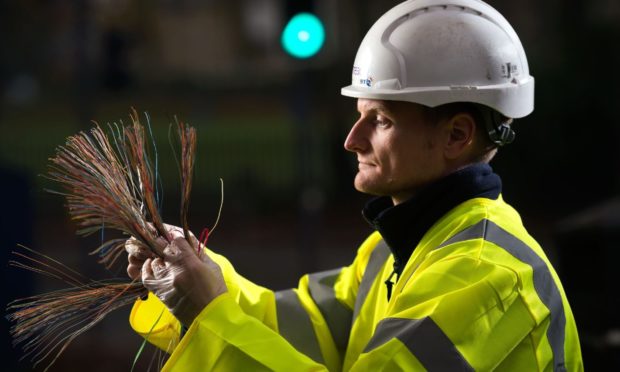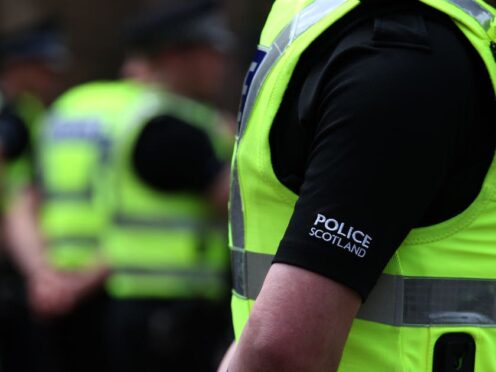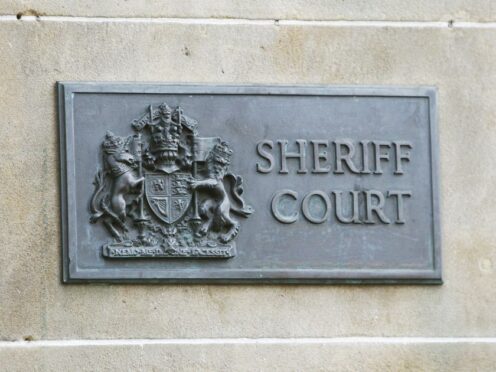Millions of pounds will be ploughed into improving internet coverage for schools and hospitals in rural parts of the north and north-east.
As part of the massive project announced today, £2 million will be spent on connecting 91 NHS surgeries and hospitals to gigabit broadband while £1m will be used to create a “high-speed Highlands” with full fibre broadband for nearly 200 schools, hospitals and GP practices.
The UK government’s “project gigabit”, an ambitious £5 billion project to roll out top-of-the-range gigabit connections to every corner of the country, will be launched in the north.
GP surgeries and community hospitals on Arran, Jura, Lewis, Mull, Shetland and Orkney will join the digital fast lane with gigabit broadband upgrades.
And as part of the £1m investment in the Highlands, 199 public buildings will now enjoy faster internet speeds.
Up to 37 sites are expected to receive connections this month and all are due to be completed by March 2022.
In the northern isles of Yell and Unst in Shetland, work as part of a £2m project to connect 21 schools, council buildings and other public sites to fibre broadband has now been completed.
Digital Infrastructure Minister Matt Warman said: “We know that improving connectivity is a top priority for people in Scotland, and this broadband boost will enable dozens more doctors’ surgeries, schools and other valued public buildings to raise productivity and deliver better quality services.
“This is on top of the £5 billion Project Gigabit we’re launching today, the first pound from which will be spent in Scotland, that is setting out to deliver next generation speeds to every corner of the UK.”
UK Government Minister for Scotland Iain Stewart said: “Upgrading broadband in NHS surgeries, hospitals, schools and councils across rural Scotland will transform public services at the very heart of our communities, helping us to build back better from coronavirus.”
Dunvegan Health Centre on Skye, Fyvie Health Centre in Aberdeenshire, Tobermory Medical Practice, Migdale Hospital in Ardgay and Dunbeath Health Centre in Caithness are among the medical sites which will benefit.
It comes as it emerged yesterday that more homes across Scotland could be hooked up to full-fibre broadband following the announcement of a £12 billion investment from BT.
A long-awaited decision from Ofcom was published, which prompted the move from the communications giant.
The regulator has decided not to impose price caps on connections, which will allow telecoms firms to make a profit on their services.
BT’s chief executive, Philip Jansen, said this “green light” means the firm can now build a full-fibre network across the UK “like fury”.
He said: “Full-fibre broadband will be the foundation of a strong BT for decades to come and a shot in the arm for the UK as we build back better from this pandemic.”
The decision from Ofcom means BT’s wholesale division, Openreach, will not face any regulation or price caps on its new fibre services.
It will also be able to increase prices on its older copper networks in line with inflation for the next 10 years.
This increase in costs will encourage more customers to switch to a full-fibre connection, generating extra cash to fund the roll-out and repay investors.
BT bosses say the move will allow them to roll out full-fibre broadband to 20 million homes across the UK by the end of the decade.
But they have also stressed they do not yet know which areas are likely to benefit.
This week BT announced work worth £384 million to lay subsea cables to 15 island communities will begin this spring.
It is part of the Scottish Government’s £600m Reaching 100% (R100) programme, which was due for completion by 2021, but has been pushed back to 2026.
Clive Selley, Openreach chief executive, said: “We’ve now passed almost 4.5 million premises and are building faster, at lower cost and higher quality than anyone else in the UK.
“Today’s regulation will allow us to ramp up to three million premises per year providing vital next generation connectivity for homes and business right across the UK.”
Ofcom said the approach will lead to properties in around 70% of the UK having a choice of networks from competitive commercial rollout.
The UK Government plans to cover 20% of the country through public funding to help ensure nobody gets left behind, the regulator added.
Openreach has said it will deploy full fibre to the remaining 10% of homes, which are typically in rural areas and are unlikely to have access to competitors.
Dame Melanie Dawes, Ofcom chief executive, said: “Over the past year, being connected has never mattered more. But millions of homes are still using the copper lines that were first laid over 100 years ago.
“Now it’s time to ramp up the rollout of better broadband across the UK. We’re playing our part – setting the right conditions for companies to step up and invest in the country’s full-fibre future.”
The plans were broadly welcomed by the industry as a step towards ensuring the UK’s broadband speeds improve without costing consumers more.
Lutz Schuler, Virgin Media chief executive, said: “Ofcom’s focus is in the right place, and we urge the regulator to maintain this trajectory so that more of the country can benefit from competing gigabit networks that deliver long-lasting economic, societal and environmental benefits.”
Greg Mesch from CityFibre said: “This regulation will promote and protect the infrastructure competition that is enabling Britain to go full speed ahead for full fibre.”
However, Highlands and Islands MSP Edward Mountain is concerned the move could penalise rural customers who will have to pay more for broadband without the benefits of a full-fibre connection.
He said: “First we had the SNP’s bad news, then we had today’s ruling from Ofcom.
“It now appears that Highlanders could be waiting longer for broadband and charged more for inadequate copper services.
“Neither of these are good news and I will continue my fight to make sure that the Highlands is connected without paying more for poor services.”









